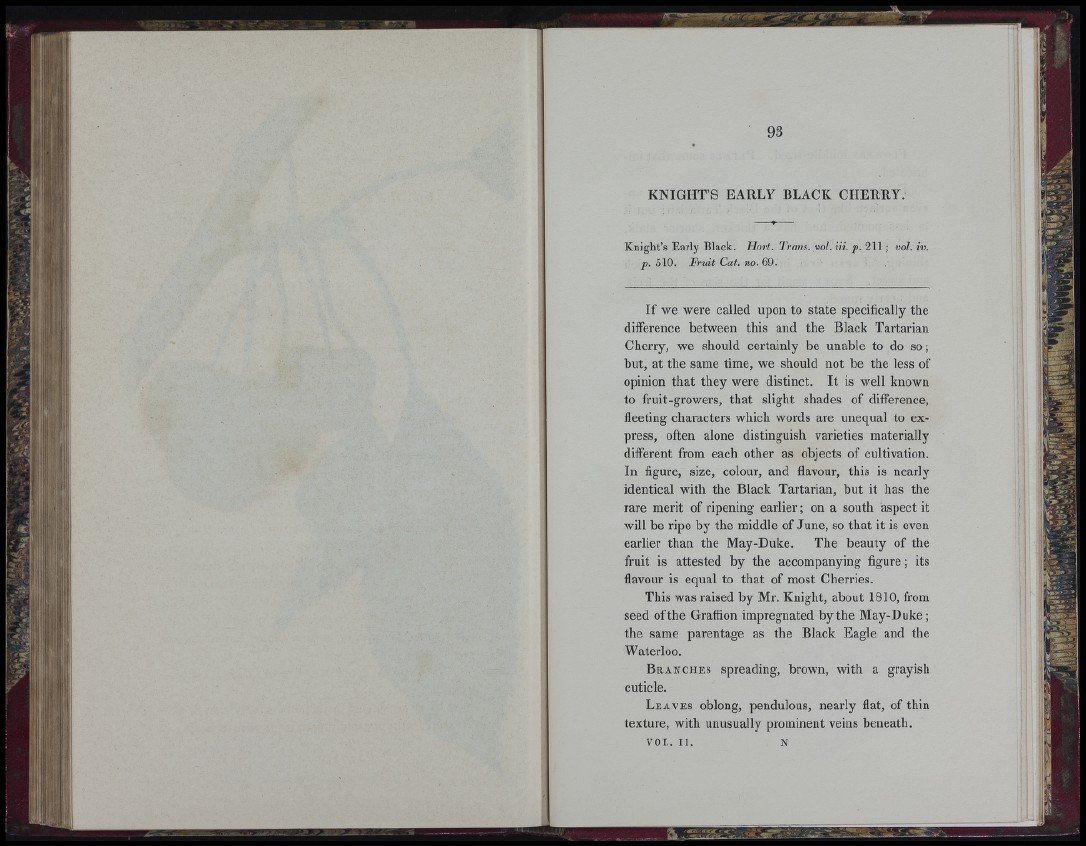
K N IG H T ’S EARLY BLACK CHERRY.
Knight’s Early Black. Hort. Trans, vol. iii. p. 211; vol. iv.
p . 510. Fruit Cat. no. 69.
I f we were called upon to state specifically the
difference between this and the Black Tartarian
Cherry, we should certainly be unable to do so;
but, at the same time, we should not be the less of
opinion th a t they were distinct. I t is well known
to fruit-growers, that slight shades of difference,
fleeting characters which words are unequal to express,
often alone distinguish varieties materially
different from each other as objects of cultivation.
In figure, size, colour, and flavour, this is nearly
identical with the Black Tartarian, but it has the
rare merit of ripening e a rlie r; on a south aspect it
will be ripe by the middle of June, so that it is even
earlier than the May-Duke. The beauty of the
fruit is attested by the accompanying figure; its
flavour is equal to that of most Cherries.
This was raised by Mr. Knight, about 1810, from
seed of the Graffion impregnated by the May-Duke ;
the same parentage as the Black Eagle and the
Waterloo.
B ranches spreading, brown, with a grayish
cuticle.
Leaves oblong, pendulous, nearly flat, of thin
texture, with unusually prominent veins beneath.
VOL. I I . N
» Ay*